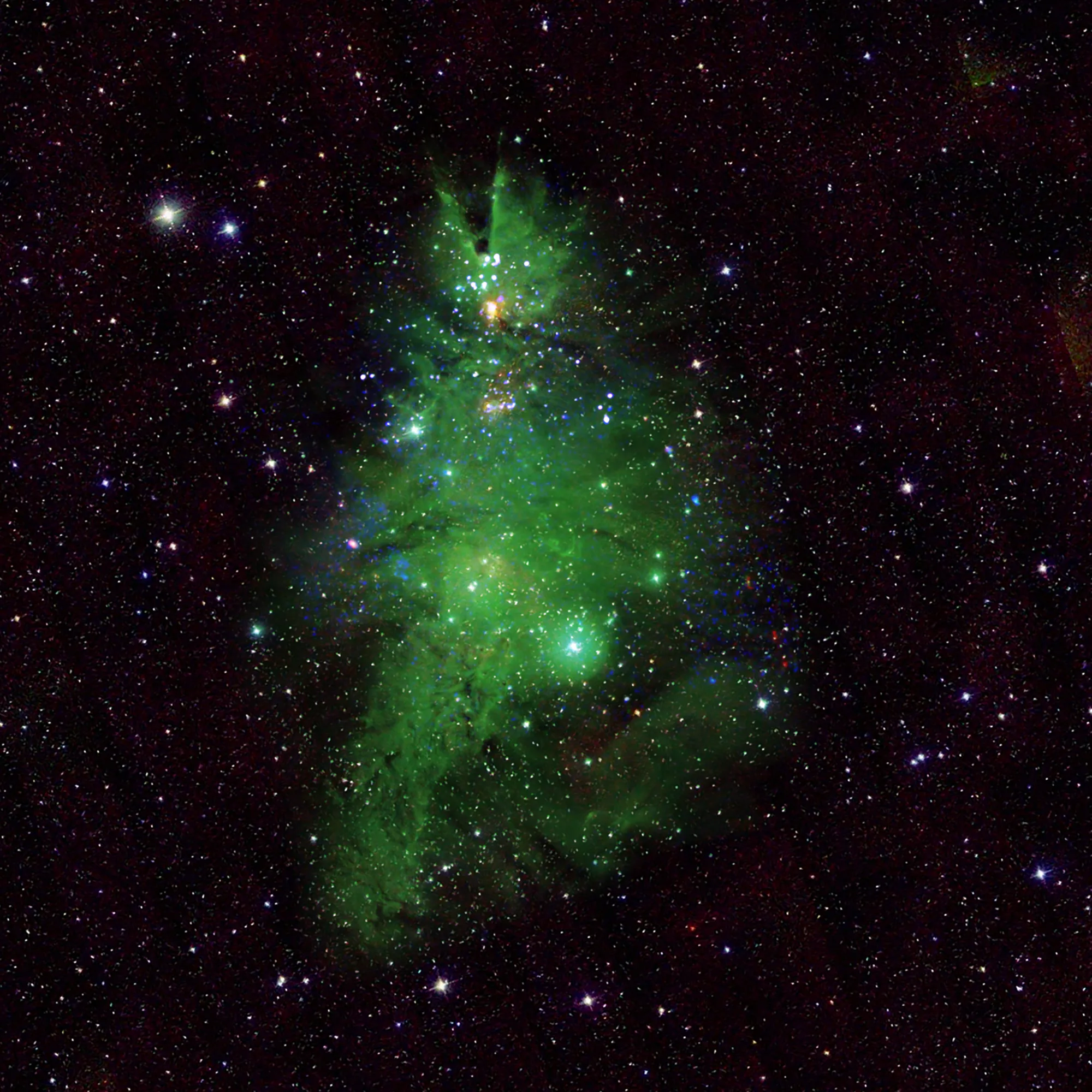In anticipation of the winter holidays, NASA has released a new image. It shows a space object that closely resembles a Christmas tree.

The image shows the star cluster NGC 2264. It is located at a distance of 2500 light-years from the Earth and consists of young stars whose masses range from one tenth to seven times the mass of our Sun.
To enhance the resemblance to a Christmas tree, NASA rotated the image by about 150 degrees relative to the standard astronomers use, with the north direction facing up. The blue and white lights correspond to data from the Chandra X-ray telescope. These are young stars that emit X-rays.
The green color corresponds to the data in the visible range obtained by the 0.9-meter WIYN telescope. It managed to capture the glow of gas in the nebula. Infrared data from the 2MASS survey shows the foreground and background stars as brilliant white spots against the blackness of space.
An animated version of the image showing the X-ray flares of NGC 2264 was also published. They are selected in such a way as to emphasize the similarity of this object to a Christmas tree. But in reality, the oscillations of the stars are, of course, not synchronized.
The flares observed by Chandra are caused by several different processes. Some of them are associated with the activity of magnetic fields and the appearance of hot regions and dark areas on the surface of stars. They can also be associated with changes in the thickness of the gas surrounding them or the fall of material from accretion disks to the surface.
Based on materials from https://www.nasa.gov

